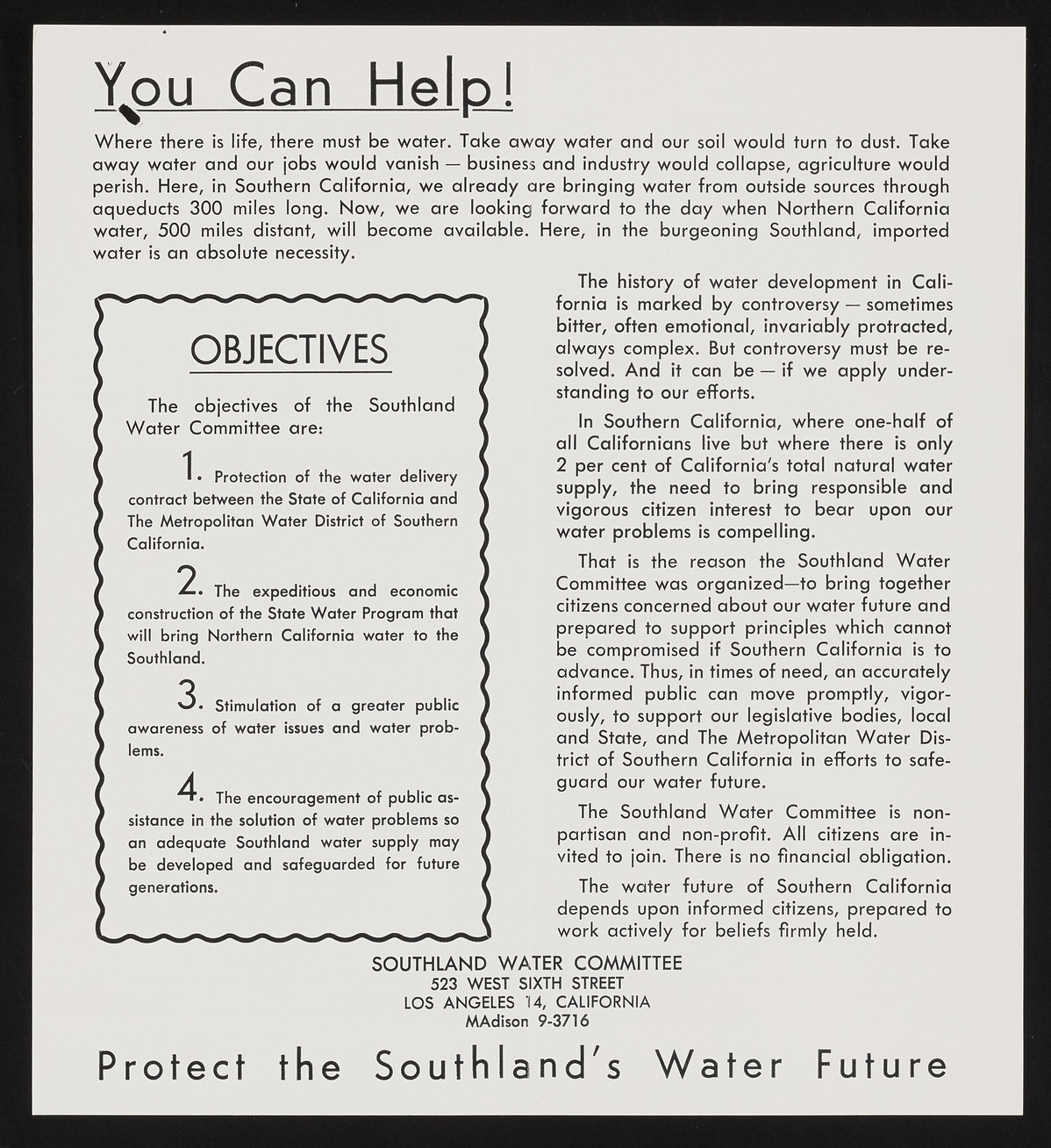Copyright & Fair-use Agreement
UNLV Special Collections provides copies of materials to facilitate private study, scholarship, or research. Material not in the public domain may be used according to fair use of copyrighted materials as defined by copyright law. Please cite us.
Please note that UNLV may not own the copyright to these materials and cannot provide permission to publish or distribute materials when UNLV is not the copyright holder. The user is solely responsible for determining the copyright status of materials and obtaining permission to use material from the copyright holder and for determining whether any permissions relating to any other rights are necessary for the intended use, and for obtaining all required permissions beyond that allowed by fair use.
Read more about our reproduction and use policy.
I agree.Information
Digital ID
Permalink
Details
Member of
More Info
Rights
Digital Provenance
Publisher
Transcription
Can Help! OBJECTIVES The objectives of the Water Committee are: Southland Where there is life, there must be water. Take away water and our soil would turn to dust. Take away water and our jobs would vanish Jbusiness and industry would collapse, agriculture would perish. Here, in Southern California, we already are bringing water from outside sources through aqueducts 300 miles long. Now, we are looking forward to the day when Northern California water, 500 miles distant, will become available. Here, in the burgeoning Southland, imported water is an absolute necessity. The history of water development in California is marked by controversy — sometimes bitter, often emotional, invariably protracted, always complex. But controversy must be resolved. And it can be — if we apply understanding to our efforts. In Southern California, where one-half of all Californians live but where there is only 2 per cent of California's total natural water supply, the need to bring responsible and vigorous citizen interest to bear upon our water problems is compelling. That is the reason the Southland Water Committee was organized—to bring together citizens concerned about our water future and prepared to support principles which cannot be compromised if Southern California is to advance. Thus, in times of need, an accurately informed public can move promptly, vigorously, to support our legislative bodies, local and State, and The Metropolitan Water District of Southern California in efforts to safeguard our water future. The Southland Water Committee is nonpartisan and non-profit. All citizens are invited to join. There is no financial obligation. The water future of Southern California depends upon informed citizens, prepared to work actively for beliefs firmly held. I • Protection of the water delivery contract between the State of California and The Metropolitan Water District of Southern California. 9 The expeditious and economic construction of the State Water Program that will bring Northern California water to the Southland. Q Stimulation of a greater public awareness of water issues and water problems. 4 . The encouragement of public assistance in the solution of water problems so an adequate Southland water supply may be developed and safeguarded for future generations. SOUTHLAND WATER COMMITTEE 523 WEST SIXTH STREET LOS ANGELES 14, CALIFORNIA MAdison 9-3716 P r ot ec t the S o u t h l a n d ' s W a t e r Fut ure

